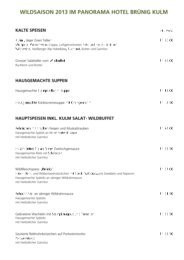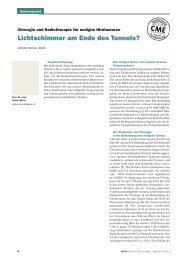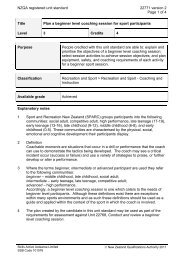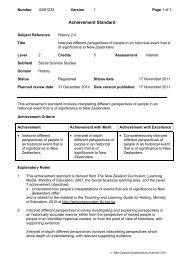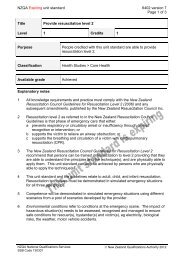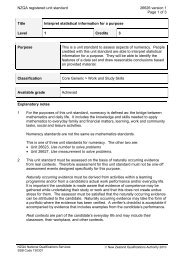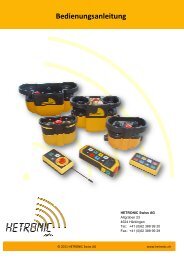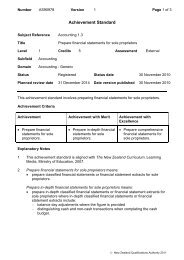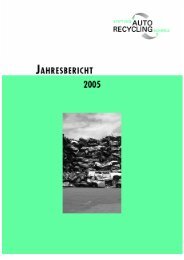Achievement Standard - NZQA
Achievement Standard - NZQA
Achievement Standard - NZQA
You also want an ePaper? Increase the reach of your titles
YUMPU automatically turns print PDFs into web optimized ePapers that Google loves.
Number AS91277 Version 1 Page 2 of 3<br />
• accurate reference to the score of at least one music work.<br />
Demonstrate in-depth understanding involves providing details supported by<br />
explanations and/or musical examples. Reference to the score of at least one work<br />
is accurate and detailed.<br />
Demonstrate comprehensive understanding involves perceptive selection of<br />
significant details backed-up by pertinent explanations and/or musical examples. A<br />
perceptive study shows insight and makes meaningful connections between aspects<br />
of the musical work being studied.<br />
3 Substantial music involves the music being of some significance and/or complexity.<br />
Several short works by the same composer(s) may be combined to represent a<br />
substantial work (eg an album of short songs). Study of a representative section of<br />
an extended work is appropriate (eg one movement of a symphony).<br />
4 Contrasting contexts involves:<br />
• historical, social and/or cultural contexts in which the work was composed and/or<br />
performed, eg medieval, renaissance, baroque, classical, romantic, twentieth or<br />
twenty-first century ‘art’ music, traditional forms of Māori music, music of other<br />
cultures, popular, rock, jazz, music theatre, music for film<br />
• composer(s) and/or performer(s) associated with the work<br />
• purpose and/or function (eg commissioned works, film music, whakapapa<br />
(genealogical narrative)).<br />
5 Musical elements and features refer to:<br />
• elements (eg harmony, timbre, texture, form)<br />
• compositional devices (eg motif, riff, inversion, fragmentation, diminution)<br />
• performance practices (eg articulation, swung quavers, improvisation)<br />
• sound production technologies (eg reverb, panning, sound properties of acoustic<br />
instruments/taonga pūoro and electric/digital instruments)<br />
• notation/transmission conventions (eg graphic score, figured bass, jazz/rock<br />
chord symbols, oral narrative).<br />
6 Traditional and contemporary forms of Māori music may be used for assessment<br />
against this standard.<br />
7 Score refers to a conventionally notated or graphic score.<br />
8 The assessment criteria must be applied to provide an overall judgment based on the<br />
weight of evidence across the study of both music works.<br />
9 Assessment Specifications for this achievement standard can be accessed through<br />
the Music page found at http://www.nzqa.govt.nz/qualificationsstandards/qualifications/ncea/ncea-subject-resources/.<br />
Replacement Information<br />
This achievement standard replaced AS90270 and unit standard 10661.<br />
© New Zealand Qualifications Authority 2011



